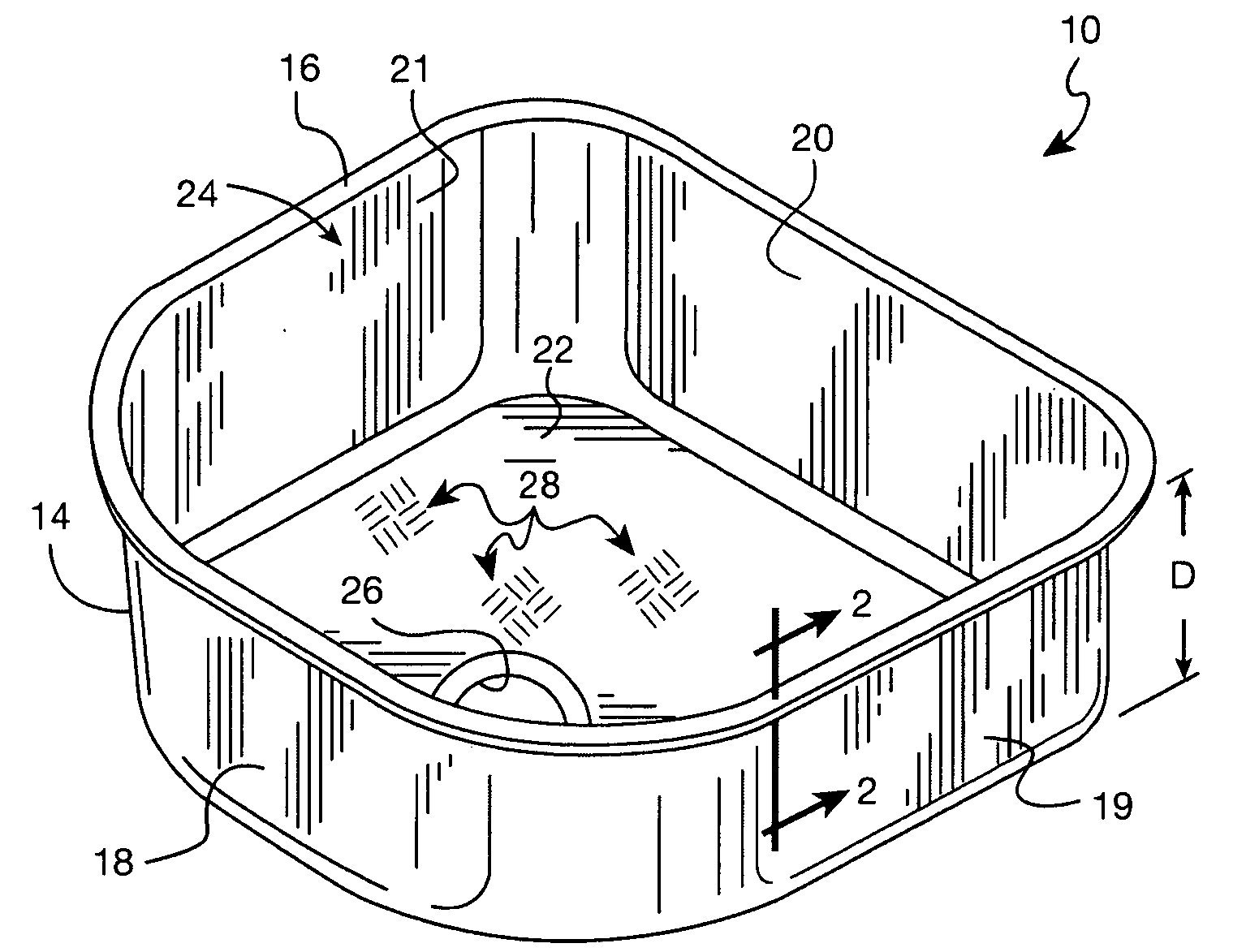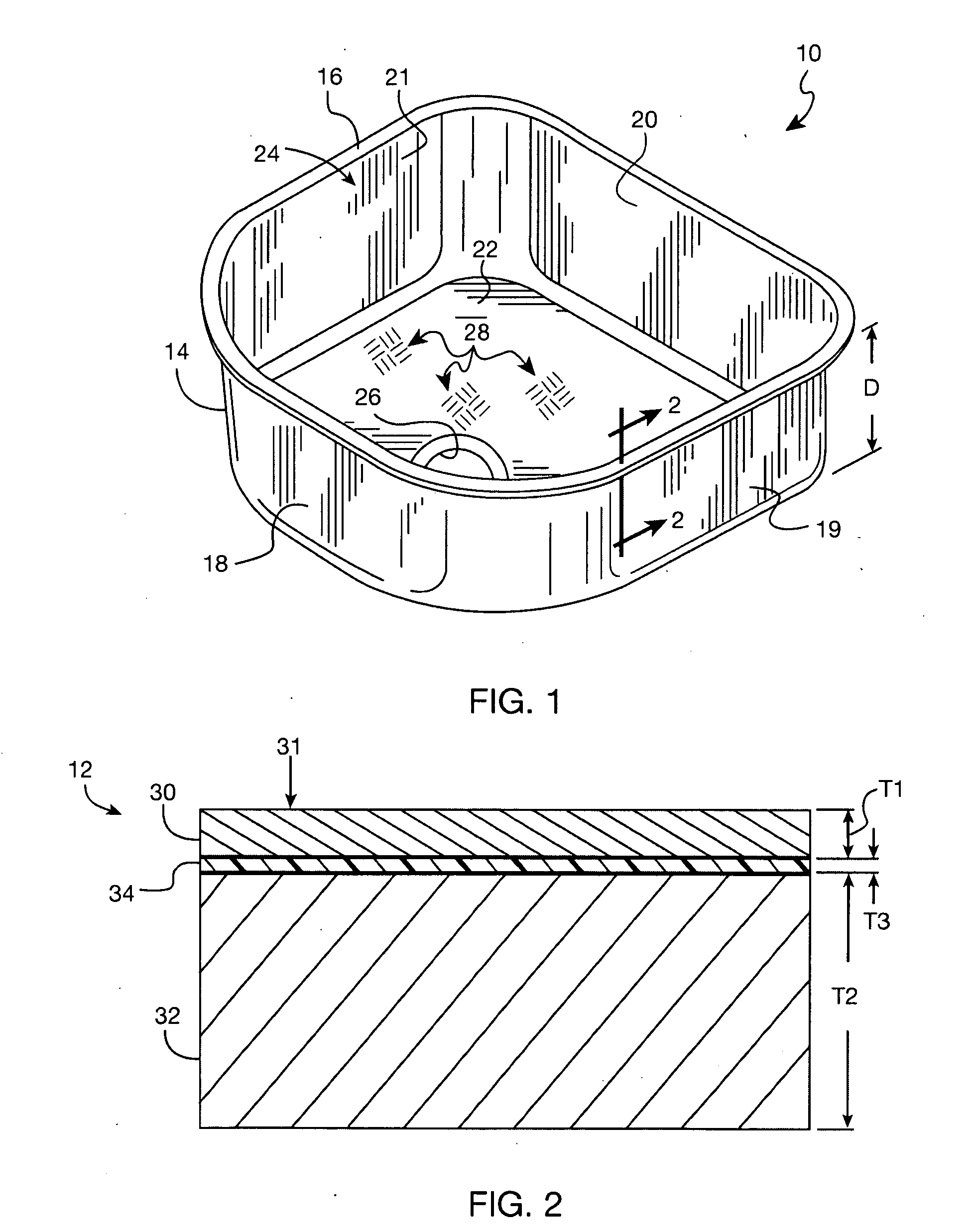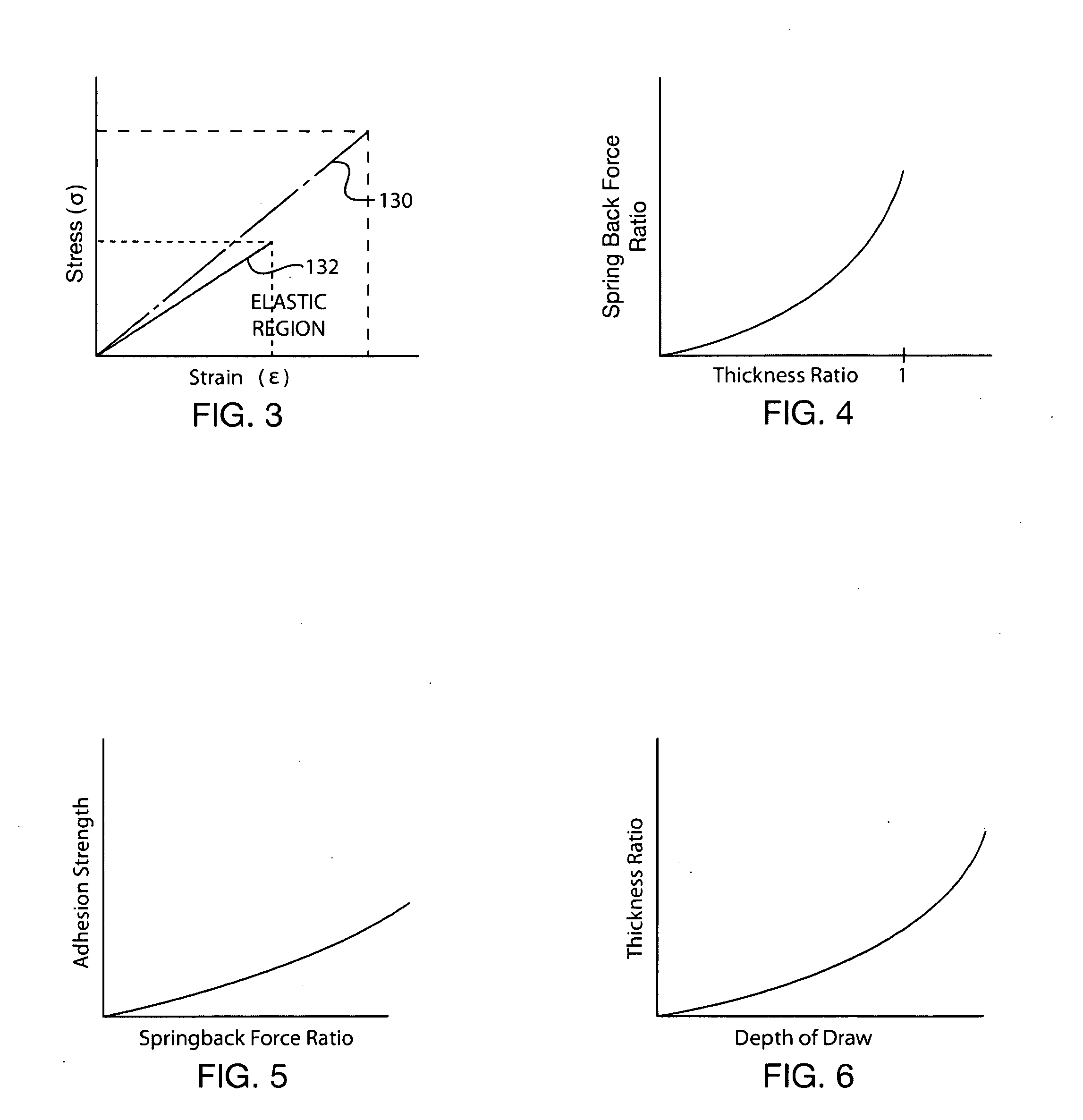Bimetal laminate structure and method of making the same
a laminate and metal technology, applied in the field of metalpolymermetal laminate containers, can solve the problems of reduced robustness, limited use of monolithic stainless steel sheets to fabricate wash sinks, and otherwise unsuitable sinks made from other materials, and achieve the effect of removing substantially all cracking and delamination of laminate panels
- Summary
- Abstract
- Description
- Claims
- Application Information
AI Technical Summary
Benefits of technology
Problems solved by technology
Method used
Image
Examples
Embodiment Construction
[0031]Referring to the drawing, wherein like reference numbers refer to like elements throughout the several views, FIG. 1 illustrates a representative wash sink configuration, indicated generally therein at 10, that is integrally formed from a metal-polymer-metal laminate structure, designated generally at 12 in FIG. 2, in accordance with the present invention. The embodiments of the present invention will be described herein with respect to the wash sink 10, which is intended solely as an exemplary application by which the present invention may be utilized and practiced. Accordingly, the present invention is by no means to be limited to the particular configuration of FIG. 1. To that extent, the present invention can be applied to other containers and wash sink configurations without departing from the intended scope of the claimed invention. In addition, the drawings presented herein are not to scale, and are provided purely for instructional purposes. Thus, the specific and rela...
PUM
| Property | Measurement | Unit |
|---|---|---|
| Thickness | aaaaa | aaaaa |
| Thickness | aaaaa | aaaaa |
| Thickness | aaaaa | aaaaa |
Abstract
Description
Claims
Application Information
 Login to View More
Login to View More - R&D
- Intellectual Property
- Life Sciences
- Materials
- Tech Scout
- Unparalleled Data Quality
- Higher Quality Content
- 60% Fewer Hallucinations
Browse by: Latest US Patents, China's latest patents, Technical Efficacy Thesaurus, Application Domain, Technology Topic, Popular Technical Reports.
© 2025 PatSnap. All rights reserved.Legal|Privacy policy|Modern Slavery Act Transparency Statement|Sitemap|About US| Contact US: help@patsnap.com



